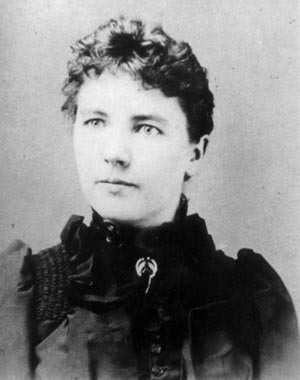Books in series
#2
Pioneer Girl
The Revised Texts
2021
For generations, the works of Laura Ingalls Wilder have defined the American frontier and the pioneer experience for the public at large. Pioneer The Revised Texts presents three typescripts of Wilder's original Pioneer Girl manuscript in an examination of the process through which she and her daughter, Rose Wilder Lane, transformed her autobiography into the much-loved Little House series. As the women polished the narrative from draft to draft, a picture emerges of the working relationship between the women, of the lives they lived, and of the literary works they created. Editor Nancy Tystad Koupal and other editors of the Pioneer Girl Project provide a meticulous study of the Wilder/Lane partnership as Wilder's autobiography undergoes revision, and the women redevelop and expand portions of it into Wilder's successful children's and young adult novels and into Lane's bestselling adult novels in the 1930s. The three revised texts of Pioneer Girl, set side by side, showcase the intertwined processes of writing and editing and the contributions of writer and editor. In background essays and annotations, Koupal and her team of editors provide historical context and explore the ways in which Wilder or Lane changed and reused the material. Wilder and Lane's partnership has been the subject of longstanding speculation, but Pioneer The Revised Texts is the first work to explore the women's relationship by examining the evolution of surviving manuscripts. Showcasing differences in the texts and offering numerous additional documents and handwritten emendations, the editors create a rich resource for scholars to use in assessing the editorial and writing principles, choices, and reasoning that Lane employed to shape the manuscripts for publication. Readers can follow along as Wilder grows into a novelist that "no depression could stop." The New York Times best seller, Pioneer The Annotated Autobiography (2014), edited by Pamela Smith Hill, gave the general reader easy access to Wilder's original account for the first time, but that book only scratched the surface of available textual and archival materials. Ultimately, the editors of Pioneer The Revised Texts employ the rich resource of letters between Wilder and her publisher and between Wilder and Lane, along with rough drafts and false starts of the Little House books, to inform scholars and readers about the original manuscript's metamorphosis into novels and about the intriguing editorial relationship between Wilder and Lane. Pioneer The Revised Texts deepens our understanding of Laura Ingalls Wilder and the process through which she would ultimately become an icon of young adult literature.
#3
Pioneer Girl
The Path Into Fiction
2023
When Laura Ingalls Wilder wrote her autobiography, Pioneer Girl, she had no idea that children across the United States would be reading about and falling in love with Laura Ingalls and her family just two years later. Pioneer Girl: The Path into Fiction traces the evolution of Wilder’s matter-of-fact memoir of her girlhood in Wisconsin into a bestselling novel for children. Along the way, editor Nancy Tystad Koupal discloses previously unknown aspects of this story as she examines the various drafts of Little House in the Big Woods.
The third volume in the Pioneer Girl Project series, Pioneer Girl: The Path into Fiction follows Wilder as she steps away from autobiography and into the world of fiction. Wilder handed her memoir over to her daughter, novelist and journalist Rose Wilder Lane, for editing, but when the revised versions of Pioneer Girl failed to attract a publisher, Lane reframed the Wisconsin portion of her mother’s autobiography as juvenile fiction. The resulting twenty-one-page picture-book manuscript, “When Grandma Was a Little Girl,” featured Pa’s well-honed tales told within the cozy Ingalls home in 1870s Wisconsin. This manuscript captured the attention of a New York publisher, who wanted more words―15,000 more words―about pioneer life for readers aged eight to ten. Accepting the challenge, Wilder returned to Pioneer Girl for additional material. As she wrote, she created multiple drafts and a completed manuscript for Lane to edit and type. Collecting all the unpublished drafts in Pioneer Girl: The Path into Fiction, editor Koupal documents Wilder’s process and explores the roles of authors, editors, and agents in the crafting of children’s fiction.
Koupal reveals that as Wilder continued down the path, she came to understand that writing novels freed her to restructure events, create stronger, combined characters, and fit truth into the space between fact and fiction. The succession of manuscript drafts that paved the way from the original Pioneer Girl to the publication of Little House in the Big Woods reveals the strengths of Wilder as an author and Lane as an editor and agent. The relationship brought forth the best efforts of both women and created a childhood classic.
“An incredibly detailed text, Pioneer Girl: The Path into Fiction simultaneously explores the development of a specific work, the growth of Wilder as an author, and the writing relationship between Wilder and Lane. In doing so, the lesser-known story behind the beginning of the successful Little House series comes to the fore. While anyone who has read Wilder would enjoy this installment of the Pioneer Girl Project and learn something new about the author, the scholarly nature of the text lends itself to a more academic audience.” — Kelly Kirk, director of the Sanford Lab Homestake Visitor Center (excerpt from review in North Dakota History, Vol. 88.1)
Author

Laura Ingalls Wilder
Author · 88 books
Ingalls wrote a series of historical fiction books for children based on her childhood growing up in a pioneer family. She also wrote a regular newspaper column and kept a diary as an adult moving from South Dakota to Missouri, the latter of which has been published as a book.